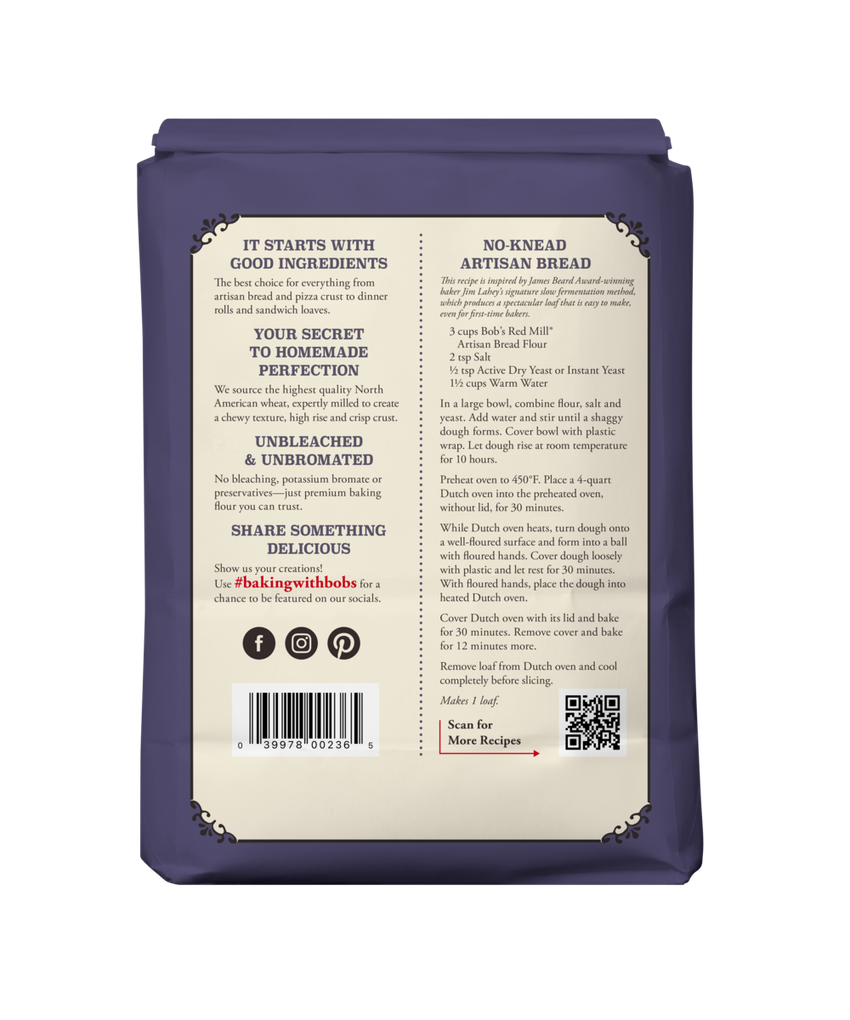Alright, so I’ve been meaning to jot this down for a while. It’s about flour, specifically Bob’s Red Mill Artisan Bread Flour, and its protein content. I get asked about this sometimes, or I see folks online wondering if it’s good enough for, you know, real bread. And I figured, hey, I use this stuff, so let me just share what I found out when I got curious myself.
It all started a few months back. I was on a bit of a baking kick, trying to perfect my sourdough. Some loaves were coming out amazing, others… well, let’s just say they were good for croutons. I started wondering if my flour was consistent, or if the protein was where it needed to be for that good chew and structure we all chase.

My Little Investigation
So, the first thing I did, obviously, was grab the bag of Bob’s Red Mill Artisan Bread Flour I had in my pantry. I buy it pretty regularly. I stood there in my kitchen, squinting at the label. You know how it is, they pack so much info on those things.
I hunted for the nutrition facts. That’s where they usually hide the protein numbers. And yup, there it was. It listed the protein per serving. Now, the serving size can be a bit tricky, usually like 1/4 cup or 30-something grams. To get a percentage, which is what most bakers talk about, you gotta do a tiny bit of math. Not my favorite part, but necessary.
My bag, at that time, said 4g of protein for a 30g serving.
So, I pulled out my phone calculator: (4 / 30) 100. That came out to roughly 13.3% protein.
Okay, that’s a pretty decent number for bread flour. Generally, you’re looking for something in the 12-14% range for good bread making, gives you that gluten development you need.
But then I thought, “Is it always this exact number?” Because, you know, flour is a natural product. Wheat changes season to season, field to field. So I figured I’d do a bit more digging, not super scientific, just what a regular home baker would do.

- I checked a newer bag I bought a few weeks later. Same numbers. Good sign for consistency, at least for the batches I was getting.
- I poked around online, on some baking forums and product pages, just to see what the general consensus or advertised numbers were. Most sources seemed to confirm it hovers around that 12-14% mark. Some sites might list it a bit differently, like “protein typically ranges from X to Y,” which makes sense.
What This Means for My Baking
So, what did this tell me? Well, it told me that the Bob’s Red Mill Artisan Bread Flour is, generally speaking, a solid choice for bread. The protein content is right up there where it should be for making most types of yeast breads, sourdough, rolls, all that good stuff. It’s not some wimpy all-purpose flour trying to pretend it’s a bread flour. It’s got the muscle.
Did it solve all my inconsistent sourdough problems? Ha, no. Baking is never that simple, is it? There’s hydration, fermentation time, shaping, oven spring… a million little things. But at least I could be fairly confident that the flour itself wasn’t the weak link in terms of protein.
It’s always a good idea to just check the bag you have, though. Don’t just take my word for it or some random website. The info is right there. For me, knowing this specific flour usually hits that 13-ish percent helps me when I’m thinking about recipe adjustments or trying something new.
So, yeah, that was my little dive into the protein content of Bob’s Red Mill bread flour. Nothing earth-shattering, but it’s practical info I use. Hopefully, it helps someone else out there who’s wondering the same thing. Happy baking, folks!













